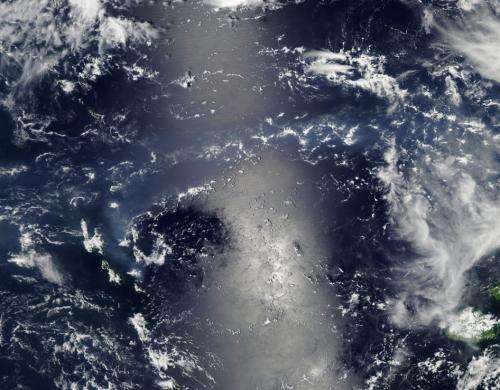Image: Volcanic smog and sunglint in the Vanuatu Archipelago

The Vanuatu Archipelago is a collection of volcanic islands about 1,800 kilometers (1,100 miles) northeast of Australia. Two of the islands, Gaua and Ambrym, frequently vent sulfurous gases.
On Jan. 7, 2014 NASA's Aqua satellite passed over Vanuatu, allowing the Moderate Resolution Imaging Spectroradiometer (MODIS) aboard to capture this true-color image. A broad plume of volcanic vog and ash rises from Ambrym and spreads across the South Pacific. Vog is a combination of "volcanic" and "smog", and is formed when gases from a volcano react with sunlight, oxygen and moisture.
The vog appears as a light blue-gray plume which arcs from the volcanic island both to the northwest and to the northeast. In the northeast, the vog crosses a mirror-like swath of silver-gray which runs from north to south. That swath is not volcanic in origin, but is an artifact called "sunglint" – the reflection of the sun off the ocean in a satellite image.
Provided by NASA





















